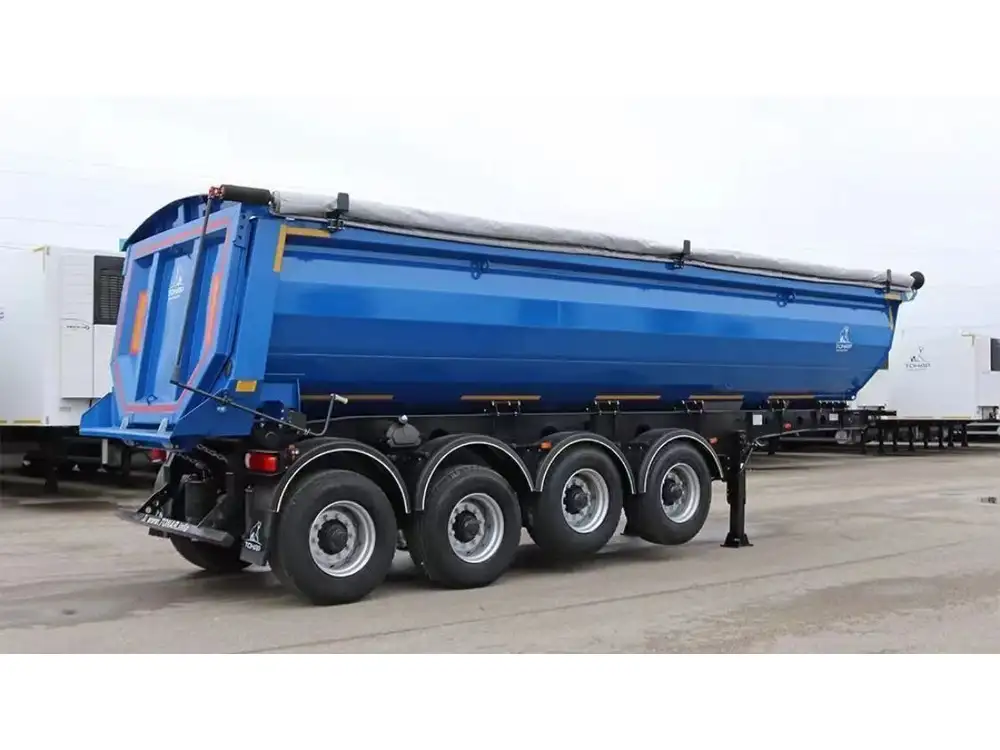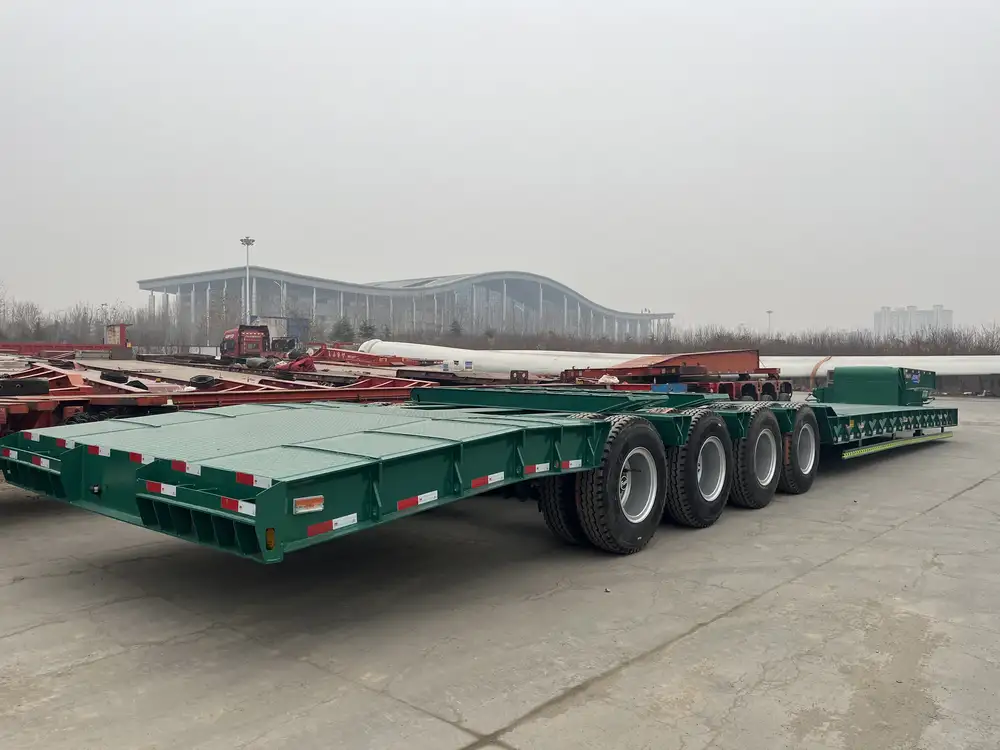Flatbed tractor trailers are indispensable in the logistics and transportation industries, known for their versatility and capacity to haul various types of cargo. However, understanding the permissible weight limits for these trailers is critical for complying with regulations, ensuring road safety, and optimizing load management. In this comprehensive guide, we will delve into key factors influencing load capacity, legal weight limits, and best practices to enhance efficiency while adhering to safety standards.
Legal Weight Limits for Flatbed Trailers
Federal Regulations
Flatbed tractor trailers must comply with federal weight limits outlined by the Federal Motor Carrier Safety Administration (FMCSA). According to the law:
- Total Gross Vehicle Weight (GVW): The maximum allowable weight for a combination of the tractor and trailer is generally limited to 80,000 pounds.
- Axle Weight Limits: The weight distributed across the axles must adhere to specific limits to prevent damage to roadways and ensure safe handling of the vehicle:
- Single Axle: 20,000 pounds
- Tandem Axle: 34,000 pounds
| Weight Type | Maximum Allowance (in pounds) |
|---|---|
| Total Gross Weight | 80,000 |
| Single Axle | 20,000 |
| Tandem Axle | 34,000 |
| Tri-Axle Vehicle | 42,000 |

State-Specific Regulations
While federal regulations set the baseline, states may impose stricter limits based on local infrastructure and road conditions. Before loading a flatbed trailer, verify specific weight allowances in the state where you will be operating to avoid penalties or fines.
Special Permits for Oversize Loads
If transporting exceptionally heavy or oversized cargo, it’s crucial to obtain a special permit. This permits greater weight limits in exchange for specific operational rules:
- Escorted Transport: Some loads may require an escort vehicle.
- Route Restrictions: Specific routes may be designated for oversized hauls.
Factors Affecting Load Capacity

Trailer Specifications
Various trailer designs influence load capacity significantly:
- Type of Flatbed Trailer: Standard flatbeds, step decks, and double drops have different height and weight capacities.
- Construction Material: Steel flatbeds tend to have a higher load capacity compared to aluminum counterparts, though aluminum offers benefits in terms of weight reduction.
Vehicle Configuration
The design of the vehicle itself needs to support the load:
- Wheelbase: A longer wheelbase can provide better stability under heavier loads but may reduce maneuverability.
- Suspension System: A robust suspension system is necessary to balance the load effectively and maximize the trailer’s capacity.
Cargo Type
The nature of the cargo matters significantly when determining how much weight you can safely carry:
- Uniform Loads: Evenly distributed items allow for maximum utilization of the trailer’s capacity.
- Non-Uniform Loads: Heavy items concentrated in one area can lead to axle overloading and increased risk of accidents.

Environmental Factors
Different road and climate conditions can affect carrying capacity and necessitate adjustments to load limits:
- Road Conditions: Uneven or damaged roads require lighter loads to prevent accidents and ensure safe transport.
- Weather Conditions: Rain, ice, or snow can compromise vehicle traction and braking efficiency, demanding a reduction in load limits.
Best Practices for Optimizing Load Capacity
Proper Weight Distribution
Adhering to optimal weight distribution is vital:
- Position Heavy Items Correctly: Place heavier cargo towards the front of the trailer to enhance stability.
- Avoid Overloading One Side: Ensure the load is evenly distributed across the trailer to prevent tipping.

Regular Maintenance and Inspections
Regularly checking the trailer and truck is fundamental to maintaining safety:
- Inspect Tires: Ensure they are in good condition and inflated to the proper PSI.
- Brake System Check: Ensure brakes are functioning correctly to handle the intended load.
Utilize Load Distribution Aids
Consider using various tools to manage and measure load distribution:
- Load Binders and Straps: Secure loads effectively to prevent shifting during transit.
- Load Cells: These can help weigh cargo before loading to ensure compliance.
Implications of Overloading

Safety Risks
Overloading can lead to increased stopping distances, loss of vehicle control, and a higher risk of accidents. The consequences are dire, not only for the driver but also for other road users.
Legal Consequences
Violating weight restrictions can result in hefty fines, penalties, and even restrictions on operating commercial vehicles. Authorities may also impound overloaded trailers until compliance is achieved.
Damage to Equipment
Excessive loads can put undue stress on vehicle components, leading to maintenance issues and costly repairs:
- Tire Wear: Overloaded trailers experience more rapid tire degradation.
- Brake System Failure: Increased weight can strain brake systems beyond their capacity.

Conclusion
Understanding the intricacies of load capacity for flatbed tractor trailers is essential for operators and manufacturers alike. By adhering to federal and state regulations, ensuring proper load distribution, and maintaining equipment, operators can maximize efficiency while minimizing safety risks and legal complications.
Summary Checklist
| Considerations | Details |
|---|---|
| Check Legal Limits | Verify federal and state regulations |
| Assess Trailer Type | Identify the type that matches your needs |
| Evaluate Cargo Characteristics | Understand the weight and distribution |
| Conduct Regular Inspections | Maintain equipment, tires, and brakes |
| Employ Load Distribution Tools | Use proper tying, binding, and measuring tools |
Call to Action
For flatbed trailer manufacturers and operators, understanding the nuances of load capacity ensures both operational success and safety. Engage with us to learn more about how our trailers can optimize your hauling capacity while meeting every necessary standard in safety and efficiency. Your success on the road depends on knowing how many pounds you can confidently and securely load.



